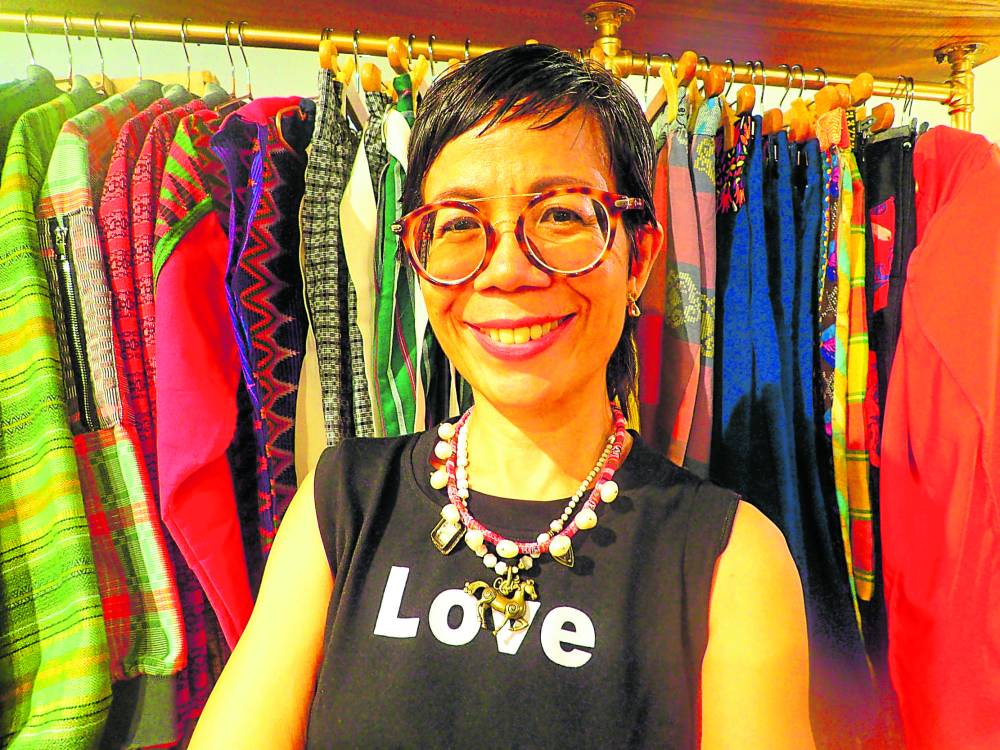
As I approached the Lokal Home Art Fashion booth at Artefino, a woman was zipping in and out of frame, chatting with people, handing out individually wrapped lebkuchen. She was wearing dark colors and eclectic accessories. But far from looking somber or intense, she seemed the very opposite: Connie Macatuno felt buoyant and comfortable, and incredibly genuine.
Obviously used to life in production as filmmaker-TV director-writer-producer, she asked her assistant to put away the pile of clothes lying about when I asked to take her photo, but not before taking a tapis—one of her favorite pieces—to wrap around herself right away.
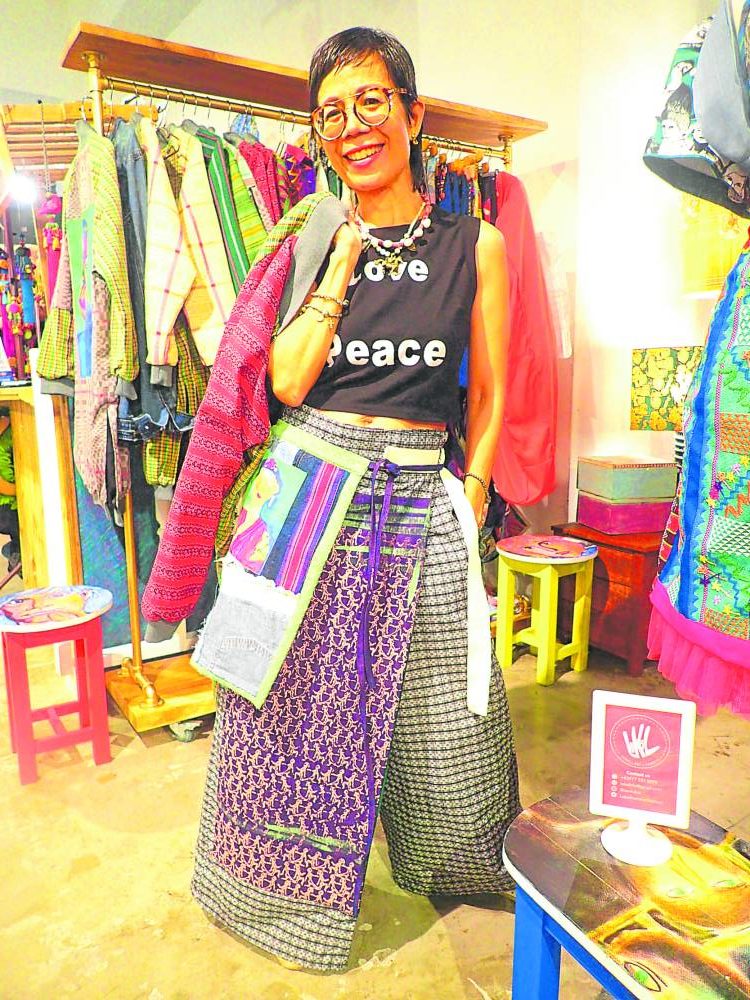
She lamented how she was wearing her tortoise shell-framed eyeglasses that day. Still, she didn’t take them off, saying she’d rather be able to see. Because as much as she is a storyteller, the director of the hit TV series “The Broken Marriage Vow” is also a story heeder.
“I observe people,” said Macatuno, also the founder and creative director of Lokal Home Art Fashion. And for her, clothes are a preview of a person.
She added: You’ll be able to tell someone’s personality based on how they’re dressed, then find out when you get to know them better whether that’s their true form or something put-on.
She herself uses clothes as self-expression as well as weapon. When she was younger, she would wear cropped tops, short shorts, miniskirts, trench coats and knee-high boots.
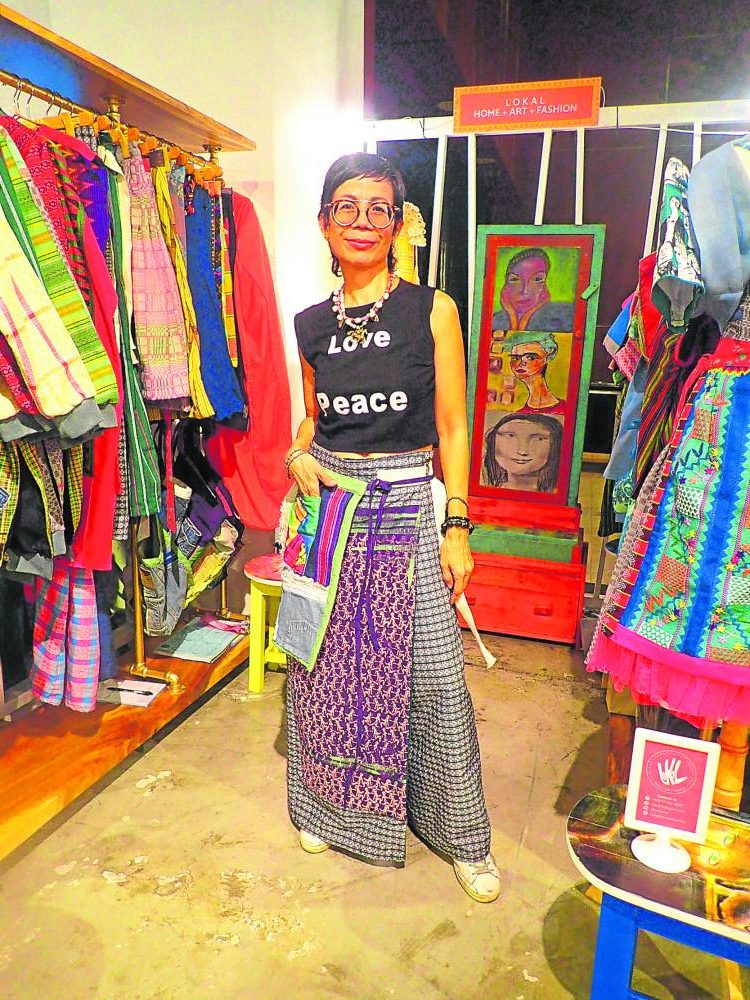
“I wanted to break the concept that if a girl wears something slinky, she didn’t know anything. At the time, people kept talking about how women should dress. How we dress up is an unspoken version of our message. For me, it’s is wanting to be free to be who I am,” she said.
“The little details that you put on are things that make you feel good about yourself, or the things that make you stand the day.”
‘Pang-asar’
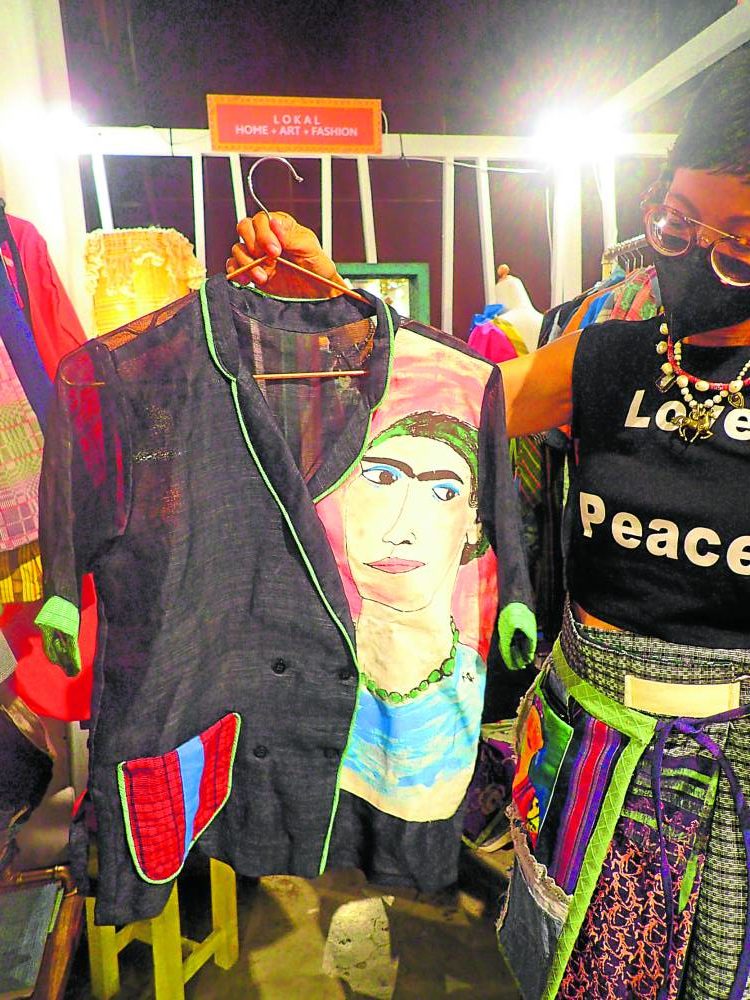
Nowadays, her style has somewhat toned down, but the fun aspect of it remains.
“In the [entertainment] industry, their term for it is ‘pang-asar yung outfit.’ It means it caught their attention, and I guess it’s also what I make with Lokal Home Art Fashion—it’s a thing that sparks a conversation,” she said.
In fact, she wants her pieces to spark a conversation about Filipino identity, “especially when you’re in another country, or even here in the Philippines, where somebody will tap you and say, ‘Where did you get that?’ or ‘What is that? Is that an apron, is that a coat? Is that a kimono?’
“Just the fact that this stranger will approach you and create a conversation about what you’re wearing is a joy in itself. You become a vessel for other people to appreciate Filipino weaves, Filipino art,” she said.
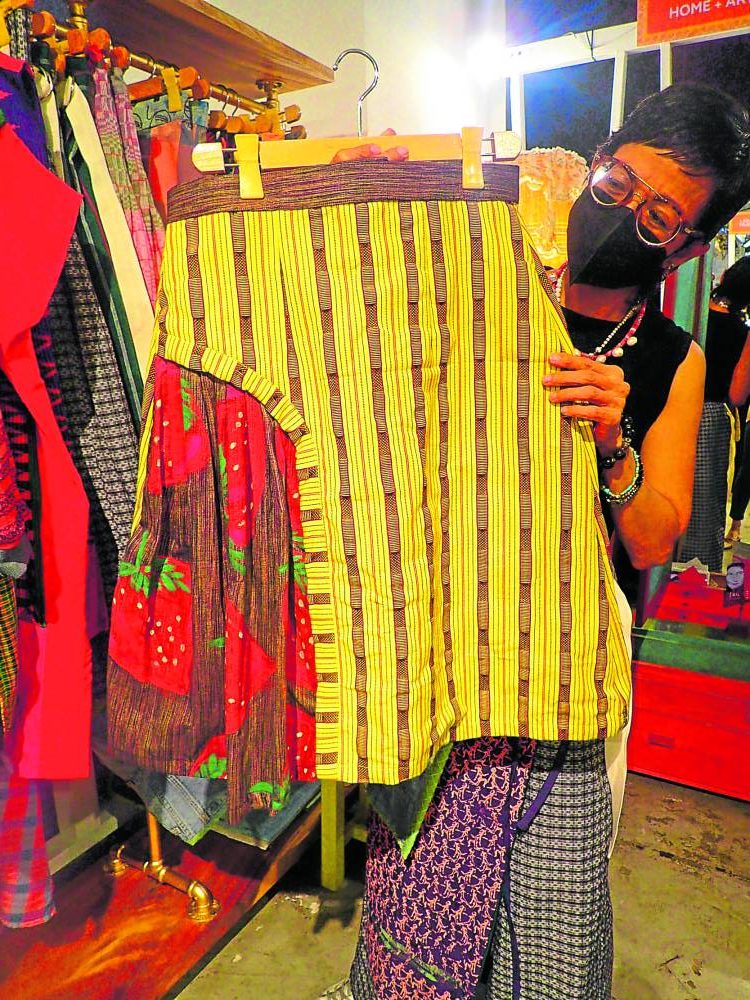
Her booth was lined with racks of pieces that were basically an amalgam of various fabrics of any and every color, interspersed with artworks painted by her son, Caxantino, a mechanical engineering student who also writes, paints and plays the piano.
She likes combining multiple weaves from various parts of the country that may not seem connected with each other. For her, while she doesn’t have a cut-and-dry process for creating her pieces, it all seems to start with the weaves, which she adores.
“Marawi weaves don’t have much design but, for some reason, I feel so connected to them,” Macatuno related. “May bigat sya pero may gaan yung hain sa kanya. The way it comes across is not dull. The weave is dense but not as packed as Sagada weave, and it’s not as loose as inabel, or not as coarse as binakol.”
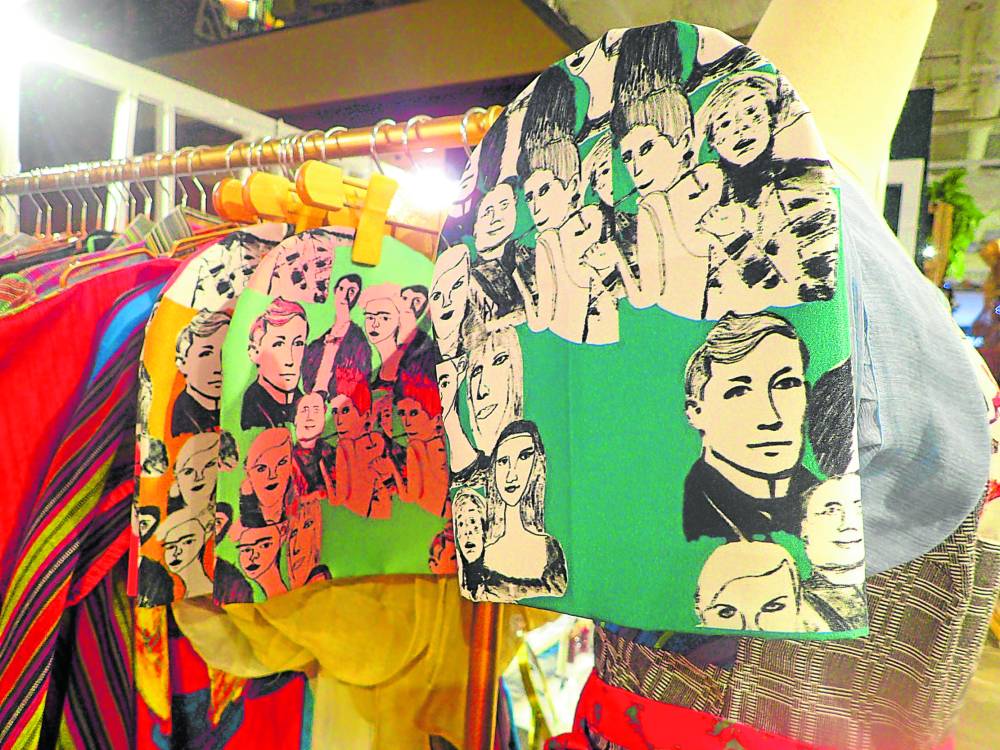
Her designs come in limited numbers, and even then, each piece is unique. “For example, I make six pieces of a polo design, but the pockets are all different. Or the tapis will have similar color this time, but the pockets are different. And next time, the colors will be different.”
That’s because with local weaves, “once it’s done, it’s done,” she explained. “If you ask for a reweave, sometimes they won’t be able to do it in the exact same way. “If the thread is no longer available or the weaver is no longer in the same mood, it may not come out the same anymore.” Even more so if it’s a back-strap weave, wherein a new loom has to be built for every project.And because of how precious each square inch of the weaves are, even though she has a tailor to help her sew her designs into reality, she still finds herself cutting the fabrics herself.
Zero waste
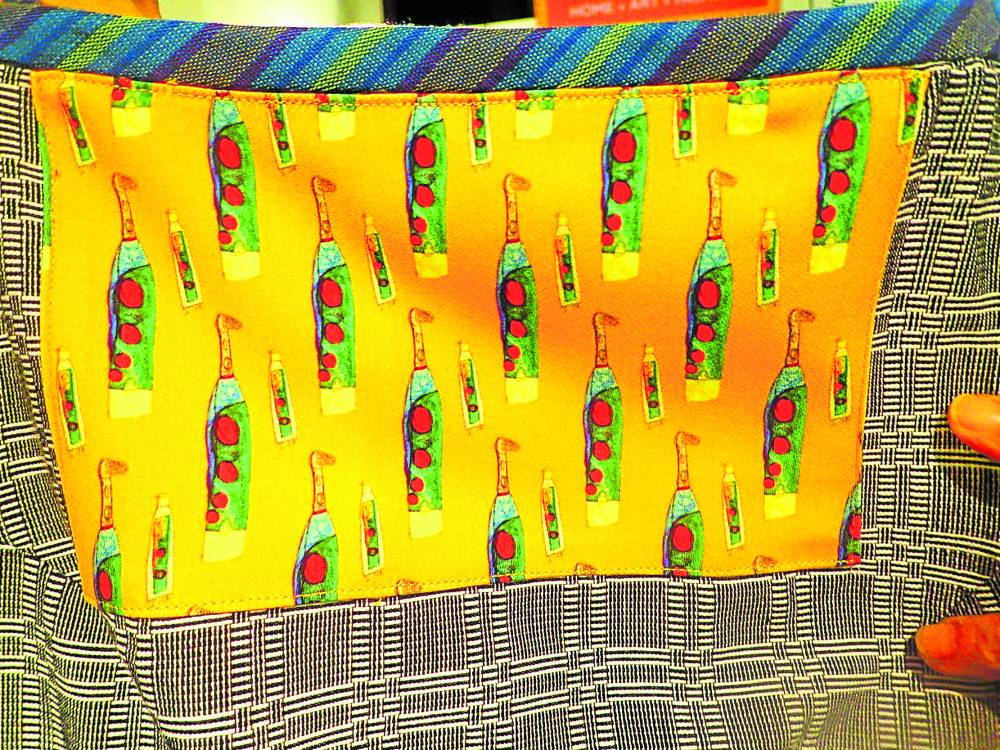
“I don’t want to waste the weaves,” she said, adding that Lokal practices zero waste. “It’s like when you butcher a pig; you have think of how to use every part in cooking dishes. It’s the same for the fabric. When you think that you waited two months for the weave to finish, how can you throw away the scraps? The transport cost alone is so expensive.”
So some of Lokal’s pieces are made almost entirely of woven fabric, while some contain only accent patches or even as small as square tags. “It’s really about being mindful about the weaves.”
In the same way, she doesn’t like putting holes in her fabrics because she said the holes will eventually get worn out and destroy the outfit. She wants the clothes to last a long time. So with the tapis, for example, she uses ties instead of buttons. And she likes the fact that this gives the wearer agency in deciding how snug or loose they want it. They can also choose to wear the accessory in a variety of ways (she even has a video to demonstrate).
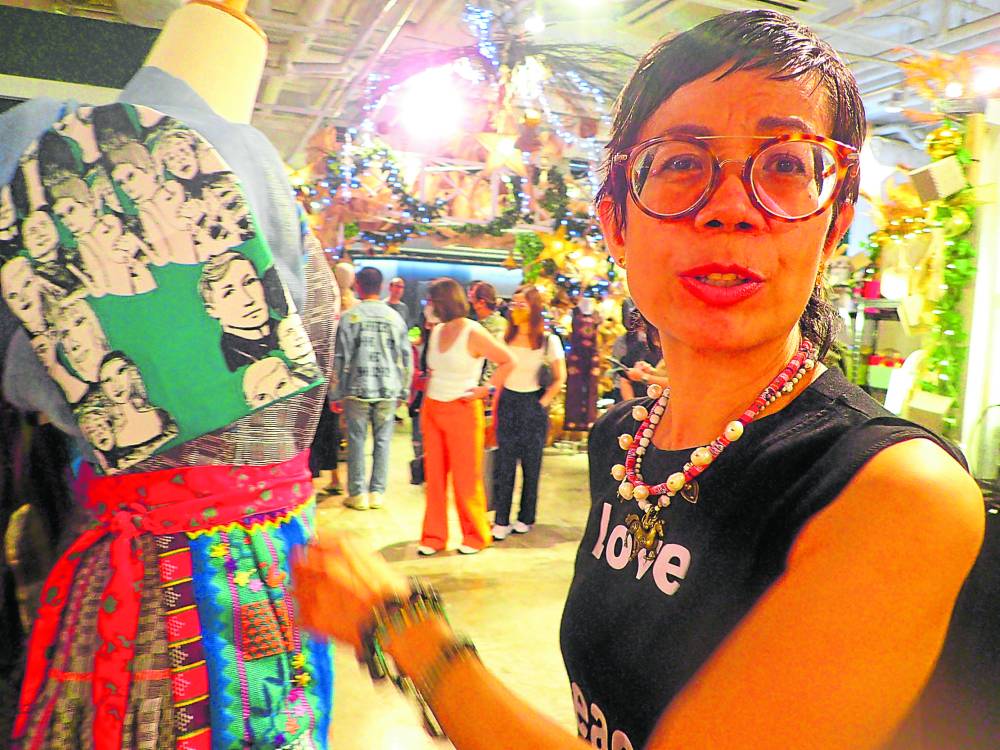
Admittedly, Macatuno said her pieces are not for everyone. But as an exhibitor, more than securing a sale, what she wants is to be able to connect with people through her clothes.
“From my experience, when it’s the right market, they will go to you and they know what to pick. When it’s not your market, they won’t purchase anything,” she said simply. “Our lampshades are not your regular height: It’s either too low or too high because, like I said, the person who will recognize this is extraordinary. They will understand the message.”
Ten years ago, people tended to get scared of her handpainted and handmade items, saying they didn’t know anything about art. “Now, that’s not the case anymore.”
Art is everywhere
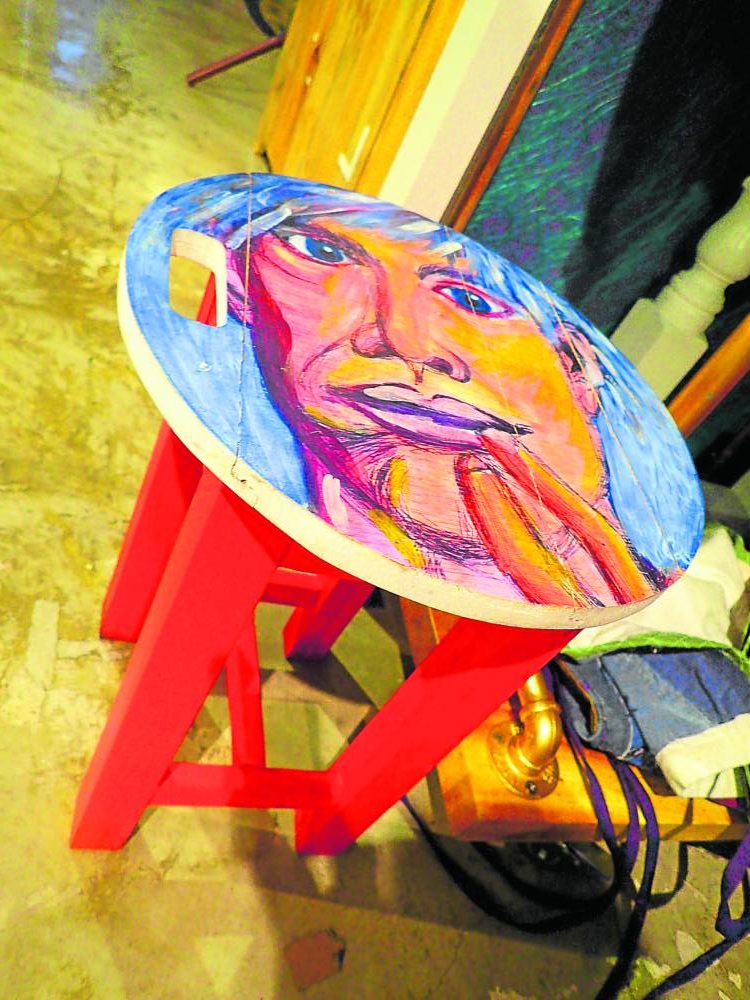
She added, “Things have come a long way from when people would cringe or flee because of their fear of art. I had to spend time chatting with them saying that art is everywhere. It’s how you fix your hair, how you fix your bed—that is art. The color combination, the placement of things, how it evokes feelings of those things for me are the simplest forms of art. All of us are artists.”
Lokal pieces truly are artworks in and of themselves. Everyone involved in creating them has poured themselves into each item, contributing to the stories contained within. For example, it takes time and energy to create a single piece—from weaving to painting to conceptualization to prepping the fabric to cutting and sewing, which all have an impact in sustaining the livelihood of cultural communities.

“What the customers are also getting is a style of life or a culture that may die if we don’t support it,” Macatuno stressed. If there’s no demand for their weaves, the weavers will turn to other livelihoods to become masons, carpenters, house help or wait staff instead.
So even as she herself has a booth in these bazaars, Macatuno is also a patron of her fellow exhibitors.
“You are in one space, sending the same message to buy local, to buy Filipino, to support local, to build that Filipino artistry,” she said.
In fact, it is her coexhibitors whom she tapped for the look of “The Broken Marriage Vow.” While she brought in a lot from her own creations and her own closet, she also connected with other designers she has known for years through selling first at Legazpi Sunday Market, then MaArte, then Artefino for the project.

Luxe brand of the Philippines
She wanted something to set the Filipino adaptation of British thriller series “Doctor Foster” apart, especially after the release of “The World of the Married,” the Korean version, the year before.
“What can I offer in terms of vision for this project that can set it apart, that I was going for a stand-alone Filipino series that is in the global context?” Macatuno had asked herself.
As she has always been putting her personal touch on her films’ wardrobe, the way she thought of featuring the Filipino flavor of the adaptation and breathing life to the characters in this particular universe is through showcasing the “luxe brand of the Philippines.”
Through this, the local designers came together. Whereas in trade fairs, they are usually competitors for the audience to buy their products, for the series, they became united in “sending this message of appreciation for local artistry that is on the level of luxe brands.”
“I wanted those weaves to tell a different layer of the story without talking,” Macatuno said.
She presented the deck for her vision for the look to BBC. “They said, ‘We want these entrepreneurs to earn,’” she related. “Because they saw the Filipino artistry and they wanted the cultural communities to be acknowledged.”
The result: Not only did the series attract a new set of audience (“The AB market that doesn’t really watch Filipino serye was suddenly watching!”) and give pride to Filipinos abroad; it also showed the cultural communities how their beautiful handiwork can be showcased on mainstream TV and appeal globally.








































